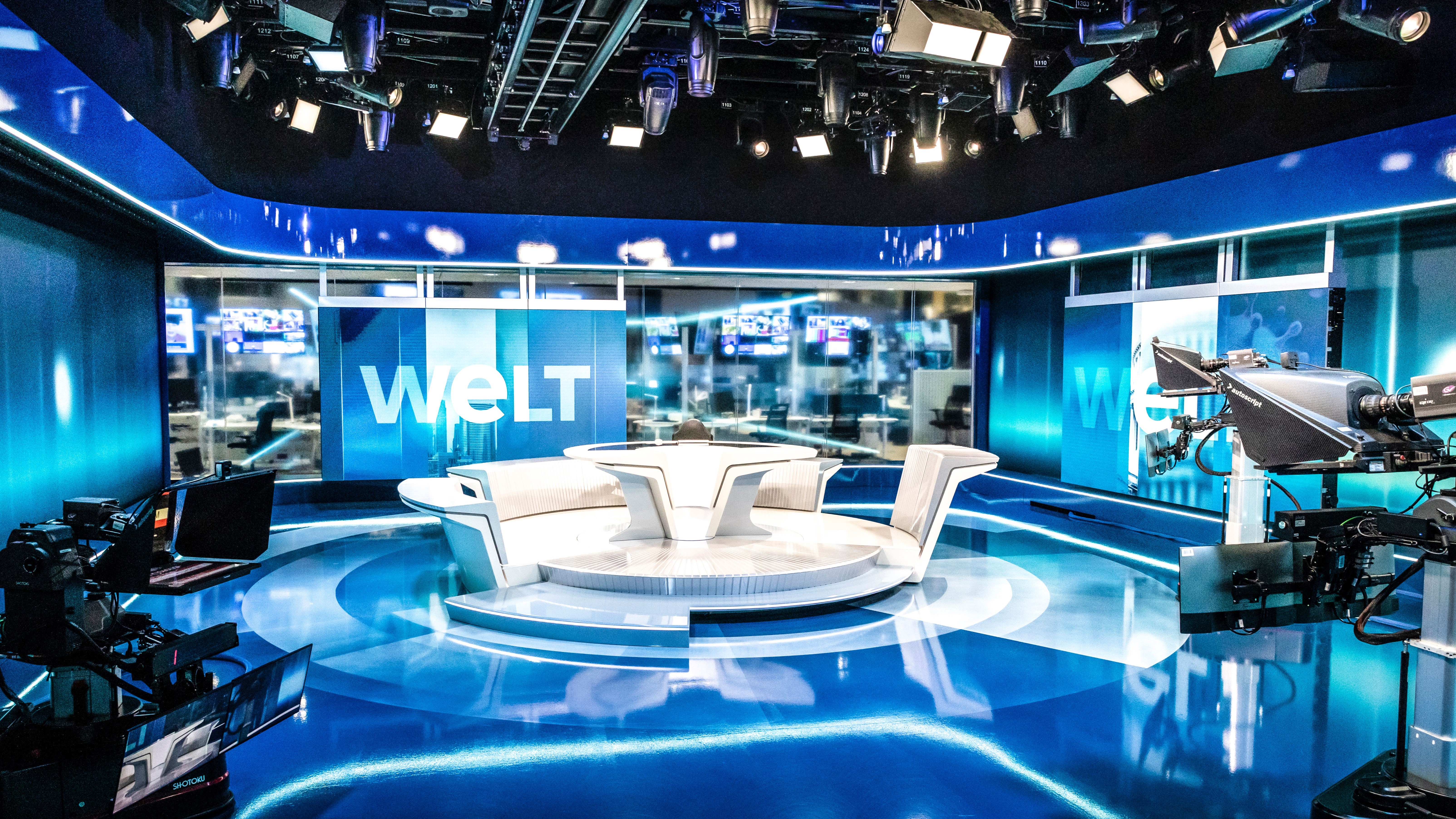ARRI IP-Based Lighting Control Part of Two New Studios for Germany’s WeltN24
The studios leverage an elaborate lighting design with IP-capable fixtures

BERLIN—German broadcaster WeltN24 has commissioned two state-of-the-art TV news studios for its station WELT, each with lighting under IP control, at its Axel Springer Campus, ARRI System Group announced.
The studios are equipped with Ethernet/IP-capable lighting fixtures throughout, enabling end-to-end IP communication and efficient workflows that are integrated into the broadcast infrastructure. The ARRI System Group consulted on, planned and installed the studio lighting and control systems on behalf of system integrator Qvest Media and the mo2 design planning office, it said.
The studios, each nearly 2,000 square feet and 18-feet high, were designed to enable closer networking and collaboration with digital and print. The glass front of Studio 1 offers visibility and being transparent fosters interaction, the company said.
The lighting design required motorized, movable LED video panels on three sides and required a minimum range of movement for the presenters without changing lighting positions. Testing determined 100 ARRI SkyPanel series (S60-C, S30-C) soft lights and moving lights with Fresnel characteristics from Robe Lighting would meet the challenge, ARRI said.
LED bars affixed to the top of motorized video panels to direct appropriate backlight onto presenters supplement the lighting in Studio 1, it added.
In Studio 2, the lighting design called for ARRI’s SkyPanels with different apertures (S120-C, S60-C, S30-C), especially important to meeting green screen requirements. Specifically, the lights achieved optimal light distribution per ARRI System Group templates of photometric simulations, the company said.
One important consideration was the quality level of the lights to ensure the fixtures would meet what’s needed over the long run in a HD/UHD environment. Criteria included the level of color rendering index, options for color temperature adjustments, calibration standards used for the LEDs and service life, it said.
Get the TV Tech Newsletter
The professional video industry's #1 source for news, trends and product and tech information. Sign up below.
The IP-based lighting control is a break with the past. “Lighting networks that have been traditionally controlled exclusively via DMX are experiencing more and more limitations in practice,” said Paul Flemming, head of projects at the ARRI System Group. “Therefore, increasing our customers’ requirements for efficient workflows can be met by specifying or designing end-to-end IP systems only.”
“DMX, as a traditional network protocol, limits the use of an intelligent monitoring for the lighting system. Using RDM as a return channel may destabilize the network, plus there are limitations defined in the standard in regard to the data rate and the maximum number of channels per one DMX universe,” he said. “With a lighting control infrastructure based solely on Ethernet/IP, as with WELT, we were able to achieve a system-wide increase in lighting system flexibility and reliability, which is hugely important, especially in 24/7 operations.”
More information is available on the company’s website.
Phil Kurz is a contributing editor to TV Tech. He has written about TV and video technology for more than 30 years and served as editor of three leading industry magazines. He earned a Bachelor of Journalism and a Master’s Degree in Journalism from the University of Missouri-Columbia School of Journalism.

